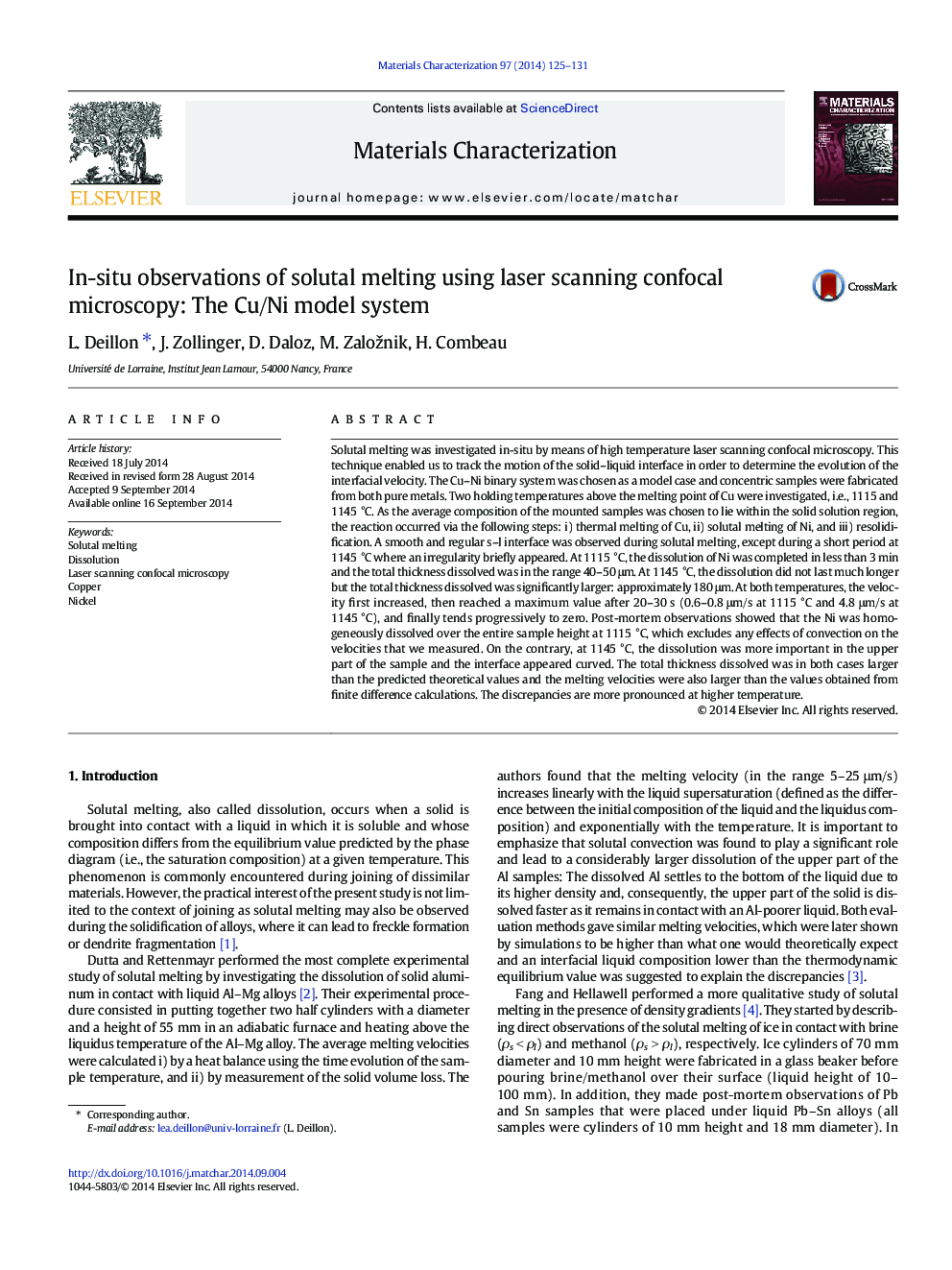| کد مقاله | کد نشریه | سال انتشار | مقاله انگلیسی | نسخه تمام متن |
|---|---|---|---|---|
| 7970758 | 1514390 | 2014 | 7 صفحه PDF | دانلود رایگان |
عنوان انگلیسی مقاله ISI
In-situ observations of solutal melting using laser scanning confocal microscopy: The Cu/Ni model system
دانلود مقاله + سفارش ترجمه
دانلود مقاله ISI انگلیسی
رایگان برای ایرانیان
کلمات کلیدی
موضوعات مرتبط
مهندسی و علوم پایه
مهندسی مواد
دانش مواد (عمومی)
پیش نمایش صفحه اول مقاله

چکیده انگلیسی
Solutal melting was investigated in-situ by means of high temperature laser scanning confocal microscopy. This technique enabled us to track the motion of the solid-liquid interface in order to determine the evolution of the interfacial velocity. The Cu-Ni binary system was chosen as a model case and concentric samples were fabricated from both pure metals. Two holding temperatures above the melting point of Cu were investigated, i.e., 1115 and 1145 °C. As the average composition of the mounted samples was chosen to lie within the solid solution region, the reaction occurred via the following steps: i) thermal melting of Cu, ii) solutal melting of Ni, and iii) resolidification. A smooth and regular s-l interface was observed during solutal melting, except during a short period at 1145 °C where an irregularity briefly appeared. At 1115 °C, the dissolution of Ni was completed in less than 3 min and the total thickness dissolved was in the range 40-50 μm. At 1145 °C, the dissolution did not last much longer but the total thickness dissolved was significantly larger: approximately 180 μm. At both temperatures, the velocity first increased, then reached a maximum value after 20-30 s (0.6-0.8 μm/s at 1115 °C and 4.8 μm/s at 1145 °C), and finally tends progressively to zero. Post-mortem observations showed that the Ni was homogeneously dissolved over the entire sample height at 1115 °C, which excludes any effects of convection on the velocities that we measured. On the contrary, at 1145 °C, the dissolution was more important in the upper part of the sample and the interface appeared curved. The total thickness dissolved was in both cases larger than the predicted theoretical values and the melting velocities were also larger than the values obtained from finite difference calculations. The discrepancies are more pronounced at higher temperature.
ناشر
Database: Elsevier - ScienceDirect (ساینس دایرکت)
Journal: Materials Characterization - Volume 97, November 2014, Pages 125-131
Journal: Materials Characterization - Volume 97, November 2014, Pages 125-131
نویسندگان
L. Deillon, J. Zollinger, D. Daloz, M. Založnik, H. Combeau,